Discover 11 hidden attractions, cool sights, and unusual things to do in Lonoke (United States). Don't miss out on these must-see attractions: Lonoke Downtown Historic District, First Presbyterian Church, and Lonoke Confederate Monument. Also, be sure to include Lonoke City Park in your itinerary.
Below, you can find the list of the most amazing places you should visit in Lonoke (Arkansas).
Table of Contents
Lonoke Downtown Historic District

The Lonoke Downtown Historic District encompasses a portion of the central business district of Lonoke, Arkansas. It extends south along Center Street, from the Lonoke County Courthouse to Front Street, and then one block east and west on both sides of Front Street. It extends eastward on the south side of Front Street another 1-1/2 blocks. Lonoke was founded as a railroad community in 1862, and this area represents the core of its downtown area for the period 1900–1945. Most of the district's 23 buildings are commercial structures, one to two stories in height, with brick facades.
The district was listed on the National Register of Historic Places in 1996. Previously listed contributing properties in the district include the Lonoke County Courthouse, the Joe P. Eagle and D. R. Boone Building, the Rock Island Depot, and the Lonoke Confederate Monument.[1]
Address: 5406 Highway 70 East, Lonoke
First Presbyterian Church
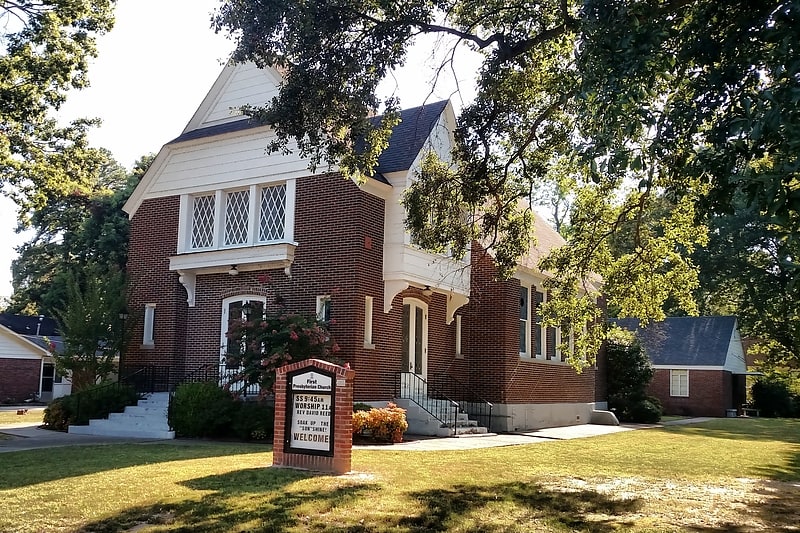
Church. The First Presbyterian Church is a historic church at 304 S. Center St. in downtown Lonoke, Arkansas. It is a single story brick building, with a gabled roof and concrete foundation. The brick is laid in running bond, and the gable ends are clad in shingles, but were originally finished in half-timbered stucco, in the Tudor Revival style. The church was built in 1919 to a design by architect John Parks Almand, and is the city's best example of ecclesiastical Tudor Revival architecture.
The building was listed on the National Register of Historic Places in 2004.[2]
Lonoke Confederate Monument
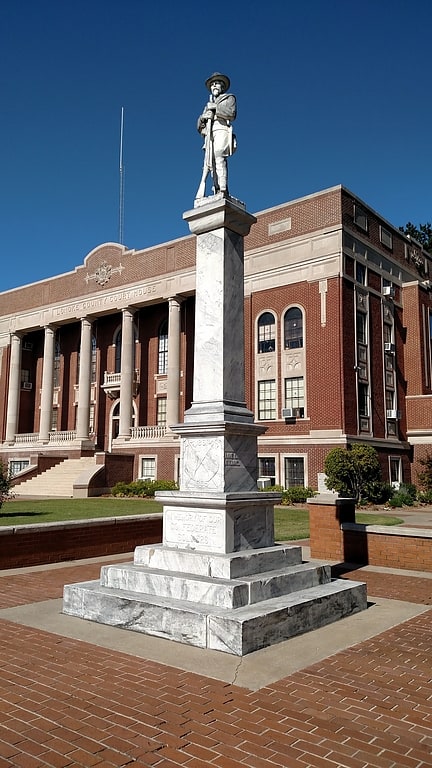
The Lonoke Confederate Monument is located in central downtown Lonoke, Arkansas, on the grounds of the Lonoke County Courthouse. It is a marble depiction of a Confederate Army soldier, 6 feet in height, mounted on a square columnar base almost 15 feet tall. The soldier holds a rifle, its butt resting on the ground, and carries a bedroll. He has a belt on which there are a canteen and bayonet. The statue was commissioned by the local chapter of the United Daughters of the Confederacy and was unveiled in 1910.
The monument was listed on the National Register of Historic Places in 1996.[3]
Lonoke City Park

The Eagle House is a historic house at 217 Ash Street in Lonoke, Arkansas. It is a large two story Bungalow/Craftsman style house, with a cross-gable roof configuration, and an exterior of yellow brick and half-timbered stucco. A long single-story porch extends across the front, supported by brick piers and large curved brackets. The house was designed by architect Charles L. Thompson and built in 1915.
The house was listed on the National Register of Historic Places in 1982.[4]
Lonoke County Courthouse
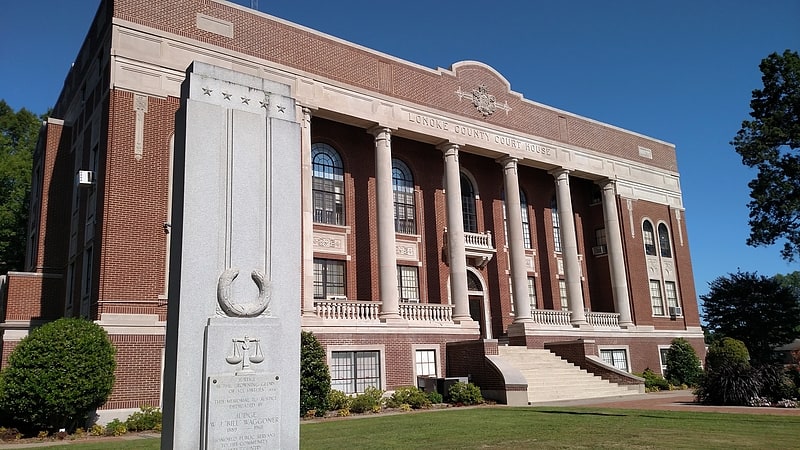
The Lonoke County Courthouse is located at 301 North Center Street in downtown Lonoke, the county seat of Lonoke County, Arkansas. It is a four-story masonry structure, finished in red brick, with cast stone trim and a raised brick basement. The main facade has its entrance recessed behind an arcade of two-story Doric columns. It was built in 1928 to a design by Little Rock architect H. Ray Burks.
The building was listed on the National Register of Historic Places in 1982.[5]
First Christian Church
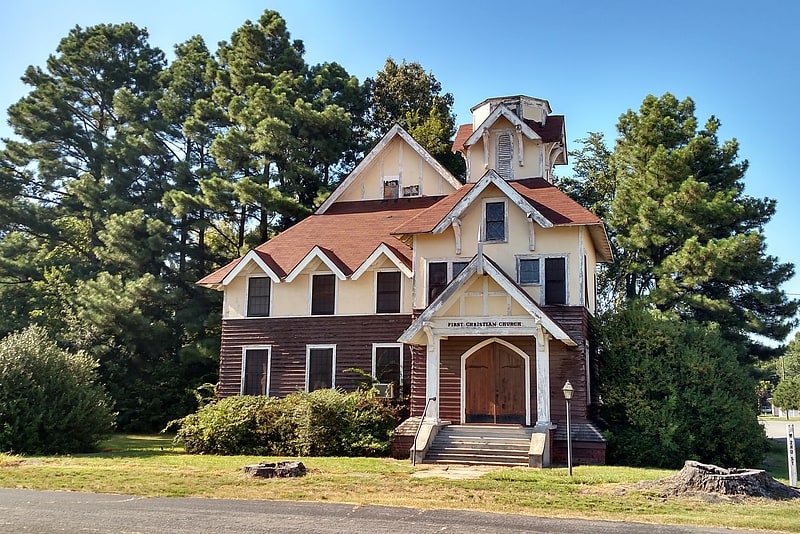
Church in Lonoke, Arkansas. The First Christian Church is a historic church at the northwest corner of 2nd and Depot Streets in Lonoke, Arkansas. It is a two-story wood-frame structure, built on a residential scale with Tudor Revival styling. Its first floor is clad in weatherboard, while its upper levels are clad in stucco with some half-timbering details. It has a complex hipped roof line, its eaves lined with exposed rafters and brackets in the Craftsman style. The church was built in 1916 for a congregation organized in 1898; it was its first permanent home. The building was listed on the National Register of Historic Places in 1997.[6]
Joe P. Eagle and D. R. Boone Building
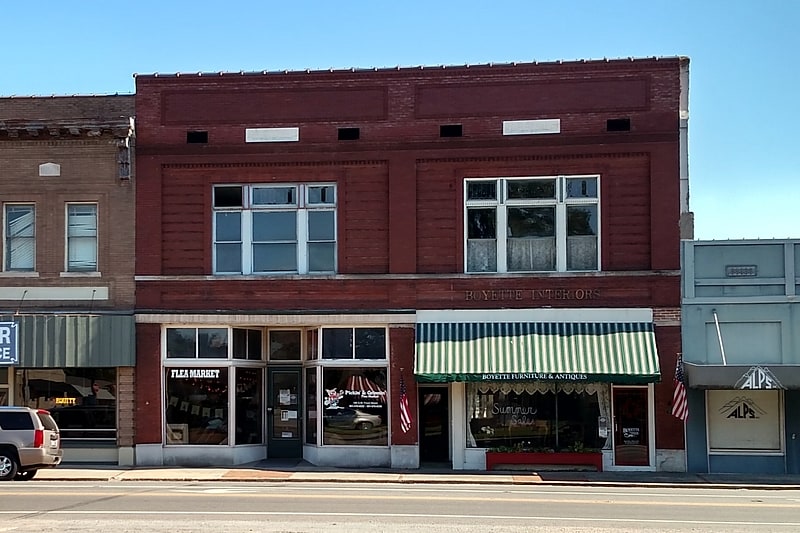
The Joe P. Eagle and D. R. Boone Building is a historic commercial building at 105-107 West Front Street in downtown Lonoke, Arkansas. It is a two-story red brick building, with a sloping flat roof obscured by parapet, and a brick foundation. It is divided into two sections, articulated by brick pilasters. The left half has an original storefront on the first floor, with plate glass display windows flanking a recessed entrance, while the right half has a more modern appearance, with a central display window, with the store entrance on the right and a building entrance to the upper floor on the left. The second-floor on both halves has tripled sash windows, the center one larger, all topped by transom windows. The building was designed by architect Charles L. Thompson and built in 1905.
The building was listed on the U.S. National Register of Historic Places in 1994.[7]
Walls House

The Walls House, known also as the McCrary House, is a historic house at 406 Jefferson Street in Lonoke, Arkansas. It is a 2+1⁄2-story wood-frame structure, with a side-gable roof and weatherboard siding. Its Colonial Revival styling includes a projecting front portico, with paired Tuscan columns supporting an entablature and balustraded balcony, above which rises a large gabled dormer with exposed rafter ends. The house was built in 1913 to a design by Charles L. Thompson.
The house was listed on the National Register of Historic Places in 1982.[8]
Shull House
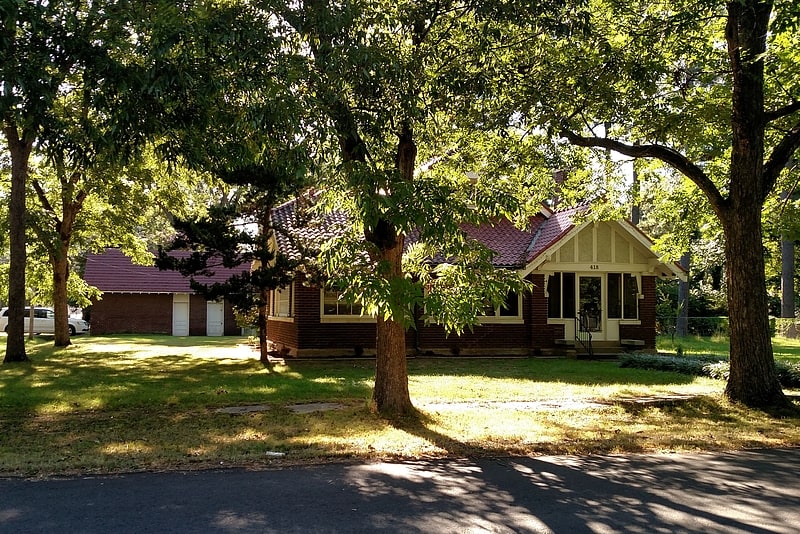
Building in Lonoke. The Shull House is a historic house at 418 Park Avenue in Lonoke, Arkansas. It is a large 1+1⁄2-story building, its exterior clad in a combination of half-timbered stucco and brick. The roof is tiled, with clipped gables and eaves that show exposed rafter ends in the American Craftsman style. Windows are typically multipane casement windows in groups. The house was built in 1918 to a design by Thompson and Harding.
The house was listed on the National Register of Historic Places in 1982.[9]
Trimble House
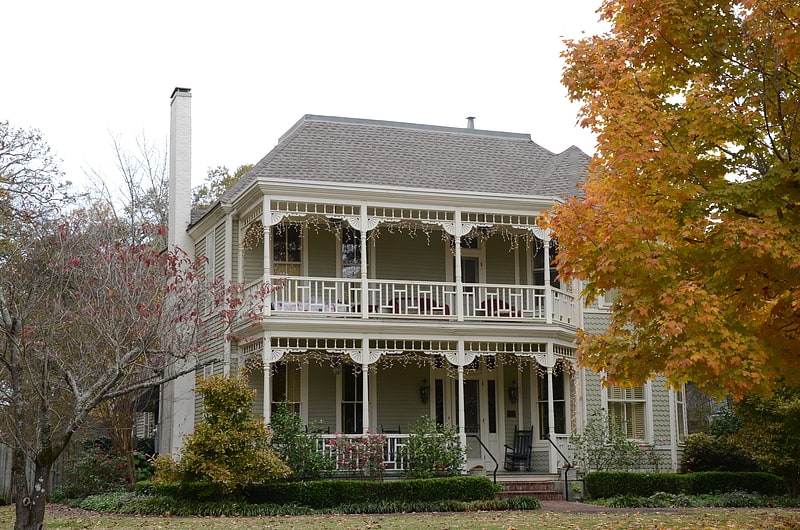
The Trimble House is a historic house at 518 Center Street in Lonoke, Arkansas. It is a large 2+1⁄2-story wood-frame structure, with a tall gabled roof. A large gabled section relieves the left side of the gable, and a gable section projects from the front, from which the entry porch, also gabled, projects. Built in 1916, it is a fine example of Craftsman architecture, designed by Charles L. Thompson.
The house was listed on the National Register of Historic Places in 1982.[10]
W.P. Fletcher House

The W.P. Fletcher House is a historic house at 604 West Fourth Street in Lonoke, Arkansas. It is a 2+1⁄2-story L-shaped wood-frame structure, with a hip-roofed main block and a gabled ell to the rear. It is clad in weatherboard and set on a foundation of brick piers. A hip-roofed single-story porch extends across two sides, with gabled sections on each side. The oldest portion of the house is the ell, which was built about 1880, with the main block added in 1903. The 1903 Colonial Revival house was built for William P. Fletcher, a leading businessman in the locally important rice growing and processing industry.
The house was listed on the National Register of Historic Places in 1990.[11]